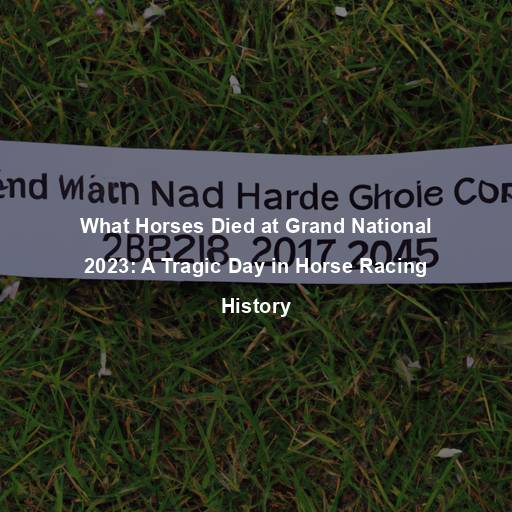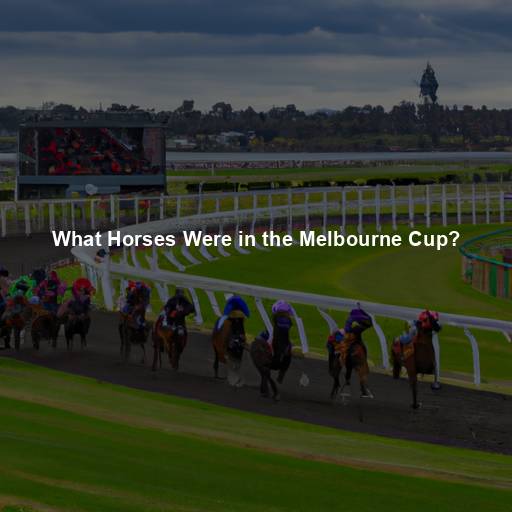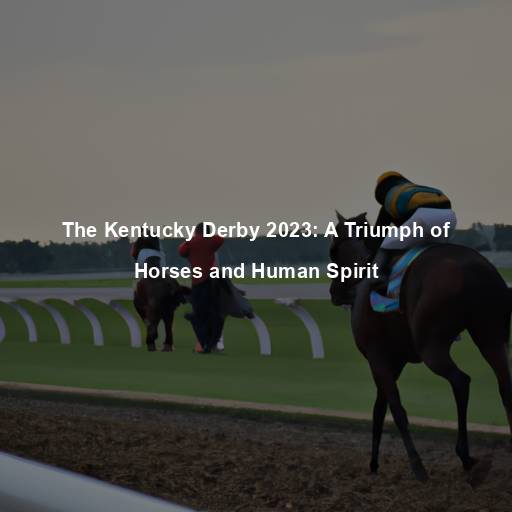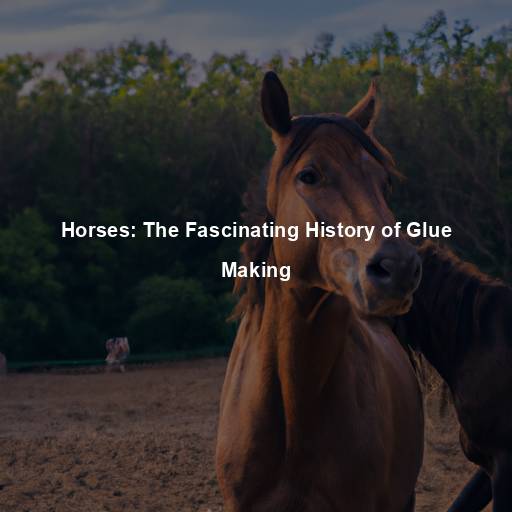When Do Horses Mate?
Last Updated on November 20, 2023 by Evan
Contents [hide]
- 1 Horse Reproduction: A Fascinating Journey
- 1.1 Understanding the Equine Estrous Cycle
- 1.2 Factors Affecting Horse Mating
- 1.3 Breeding Methods and Considerations
- 1.4 Importance of Balanced Nutrition
- 1.5 The Role of Exercise in Horse Reproduction
- 1.6 Environmental Factors Affecting Horse Mating
- 1.7 The Influence of Human Intervention on Horse Breeding
- 2 FAQs for When Do Horses Mate:
- 2.1 What is the breeding season for horses?
- 2.2 At what age can horses start mating?
- 2.3 How do horses find suitable mates?
- 2.4 Do horses mate for life?
- 2.5 Can horses mate all year round?
- 2.6 How long is the gestation period for horses?
- 2.7 Are there any signs that indicate a mare is ready to mate?
- 2.8 How often can a mare be bred during a breeding season?
- 2.9 Can horses be artificially inseminated?
- 2.10 What precautions should be taken during horse mating?
Horse Reproduction: A Fascinating Journey
For countless generations, the enigmatic allure of horses has enthralled mankind, captivating our hearts and minds with their undeniable grace and power. From the untamed, free-spirited ancestors galloping across vast grasslands to the beloved companions trotting by our sides, equines have forged an indelible connection with humanity. And yet, amidst the equestrian admiration, a question that perplexes many an equine enthusiast frequently arises: When do these majestic creatures, these paragons of beauty, engage in the act of coupling? In this compelling exposé, we shall embark on an expedition into the intricate world of horse reproductive processes, illuminating the various stages and multifaceted factors that interlace to shape their captivating mating behaviors.
Understanding the Equine Estrous Cycle
Discovering the elusive intricacies of equine reproductive behavior takes us on a captivating journey through the mystical realm of the estrous cycle. Unlike our own familiar monthly menstrual symphony, female horses embark on a rhythmic voyage that unfurls approximately every 21 days. Within this enigmatic cycle, we encounter a kaleidoscope of phases, each entrenched in its unique purpose, intricately woven to ensure the continuity of equine life. As we unravel the enigma of equine reproduction, we delve into a world as complex as the most bewitching puzzles, unveiling the secrets of nature’s own captivating artistry.
Welcome to the world of equine reproduction! In the enchanting phase known as proestrus, lasting around 4 to 7 days, our majestic mares showcase their desire for a romantic rendezvous. Witness their alluring charms as they engage in increased urination, frequent tail-raising, and enchanting melodies that echo through the air. Prepare to be captivated by the burst of fervor and perplexing allure that proestrus brings!
Ah, the wonders of nature’s intricate dance when it comes to mating in the equine world. In this particular spectacle, we find ourselves immersed in the captivating realm of estrus. Driven by nature’s wisdom, this pivotal phase, often referred to as “heat,” holds the key to a successful union between the majestic mare and the eager stallion. Lasting between 5 to 7 days, this enigmatic period unveils itself through a series of intriguing cues.
Metestrus, a mysterious and intriguing phase, emerges after the tantalizing period of estrus. Lasting for a span of 5 to 9 enigmatic days, this enigmatic phase marks a crucial transformation within the mare’s reproductive system, as it readies itself for the enigmatic possibility of pregnancy.
- Diestrus: Diestrus is the final phase of the estrous cycle, lasting approximately 14 to 16 days. If the mare is not pregnant, her reproductive system returns to a state of rest and prepares for the next cycle.
Factors Affecting Horse Mating
When it comes to the intricacies of the equine mating process, numerous elements add to the complexity. Beyond the established estrous cycle, a myriad of variables comes into play, dictating the timing of horse reproduction. Delving deeper into the enigmatic workings of nature, let us unravel the captivating factors that influence the intricate dance of horse mating.
Seasonality
Horses, like many other animals, are influenced by seasonal changes. In the wild, horses usually breed during the spring and summer months when food resources are abundant. This instinctual behavior is thought to optimize the chances of survival for both the mare and the foal.
In the world of horse breeding, there exists a captivating technique that harnesses the power of artificial lighting to transcend Mother Nature’s boundaries. This enigmatic method holds the key to unlocking a mare’s hidden potential, igniting a bewildering series of hormonal shifts. In this intricate dance between man and beast, breeders expertly manipulate the ambient light to deceive the mare’s very essence, seamlessly transporting her to the mystical realm of a simulated breeding season. It is in this realm where perplexity and possibility collide, birthing a new chapter in the art of equine procreation.
Age and Health
The age and overall health of a horse can significantly impact its reproductive capabilities. Mares typically reach sexual maturity between 2 and 3 years of age, although some may mature earlier or later. It is essential to ensure that a mare is in good health before considering breeding, as underlying health issues can affect fertility and the successful outcome of pregnancy.
Stallions, on the other hand, can begin breeding as early as 1 year of age, but it is generally recommended to wait until they are physically and mentally mature to ensure optimal breeding performance.
Social Interaction
Horses, those majestic creatures with their noble presence, have a captivating social nature that shapes their intricate mating rituals. Delving into the wild, we find mares establishing tight-knit connections, as if weaving a tapestry of companionship. Moreover, the presence of a commanding stallion adds an enigmatic mystique, intricately orchestrating the dynamics of procreation within the herd, leaving us spellbound with the complexity of it all.
In the world of equine relationships, the dynamics of proximity between horses can greatly influence a mare’s receptiveness to a specific stallion. It’s intriguing to note that certain mares display heightened interest in mating when surrounded by other breeding mares or when a stallion of esteemed social status is nearby. This intriguing quirk adds a delightful twist to the intricate dance of equine courtship.
Breeding Methods and Considerations
As we delve deeper into the enigmatic realms of the equine world, our comprehension of the mysterious estrous cycle and its intricate influence on horse mating grows. With this newfound knowledge in tow, let us embark on a journey to unravel the perplexing tapestry of breeding methods employed in the realm of horses. As we navigate through the labyrinthine paths of equine reproduction, we will encounter a myriad of techniques, each shrouded in its own veil of enigma, waiting to be uncovered and understood. Join us on this captivating expedition as we witness the burst of diversity in breeding approaches that abound in the equestrian universe.
Natural Breeding
In the enchanting world of equine reproduction, there exists a method as timeless as the galloping hooves across vast grasslands. Natural breeding, like a dance of destiny, unveils the remarkable union between a majestic mare and a noble stallion. Harmonizing the delicate balance of compatibility, health, and safety, this method preserves the innate beauty and wonder found in the untamed wild. Step into the realm of equine enchantment as nature takes the reins and guides the path to equine creation.
Hand Breeding
Hand breeding involves the controlled introduction of the mare and stallion, usually under the supervision of experienced handlers. This method allows for greater control over the mating process and reduces the risk of injury to both horses.
Artificial Insemination
Artificial insemination (AI) is a technique that involves collecting semen from the stallion and depositing it into the mare’s reproductive tract. AI offers several advantages, including the ability to breed horses that are geographically distant, the ability to utilize frozen or cooled semen, and reduced risks associated with natural breeding.
Embryo Transfer
Embryo transfer is a method commonly used in the equine industry to maximize breeding potential. It involves collecting a fertilized embryo from a donor mare and transferring it to a recipient mare. This technique allows high-performing mares to continue their competitive careers while producing offspring.
Importance of Balanced Nutrition
Horses, magnificent creatures that they are, rely on a carefully curated menu to maintain their physical prowess and reproductive prowess. A harmonious blend of essential nutrients fuels their reproductive engines, ensuring the continuation of their noble bloodlines. Now, let us venture into the realm of equine biology and unlock the secrets of the vital nutrients that kindle the flames of horse fertility.
Protein
Protein, a vital element in the equine nutritional puzzle, plays a crucial role in fueling tissue growth and mending in horses. As the breeding season takes hold, mares find themselves navigating a perplexing maze of heightened protein needs. Their bodies call for more of this mighty nutrient to power the flourishing fetus’s growth and to cater to the demanding task of milk production post-foaling.
Vitamins and Minerals
Ensuring the well-being and optimal health of our equine companions is of utmost importance. Delving deeper into the intricate realm of equine physiology, it becomes evident that vitamins and minerals play a vital role in not only sustaining life but also in facilitating the complex process of reproduction. Among the plethora of essential nutrients, several key players stand out in this enigmatic realm, such as vitamin E, selenium, zinc, and copper. Through their prowess in hormone production, nurturing fetal development, and bolstering immune function, these indispensable nutrients grace the stage, dazzling us with their crucial importance.
Energy
Ensuring the right amount of fuel for our equine companions is paramount in nurturing their overall well-being and reproductive prowess. An insufficient intake of energy can cast a dark cloud over their ability to conceive or sustain a pregnancy. Failing to address these weighty matters might leave horse owners perplexed and yearning for healthier outcomes.
The Role of Exercise in Horse Reproduction
Regular exercise is not only beneficial for a horse’s physical fitness but can also have a positive impact on reproductive health. Here’s how exercise influences horse reproduction:
Hormonal Balance
As our understanding of equine physiology continues to grow, the fascinating role of exercise in regulating hormonal levels among horses becomes increasingly clear. This discovery has the potential to revolutionize our approach to equine reproduction, as we now recognize the profound impact of exercise on maintaining regular estrous cycles in mares and enhancing semen quality in stallions. The intricate connection between physical activity and hormonal balance in these majestic creatures is truly a testament to the marvels of nature.
Blood Circulation
Physical activity stimulates blood circulation, delivering oxygen and nutrients to the reproductive organs. Improved blood flow enhances the overall reproductive function, increasing the chances of successful mating and conception.
Stress Reduction
There is an interesting relationship between exercise and stress reduction in horses. It turns out that when horses engage in regular physical activity, their stress levels decrease, which is vital for their reproductive success. The intricate hormonal balance in mares can be disturbed by high stress, potentially affecting their ability to conceive or sustain a pregnancy. Therefore, incorporating exercise into the equine routine may prove to be a perplexing solution to enhance the chances of a successful reproductive journey.
Environmental Factors Affecting Horse Mating
Apart from the biological and physiological aspects, environmental factors also play a significant role in horse mating behavior. Let’s explore some key environmental factors that can influence horse reproduction:
Social Dynamics
Horses, being highly social creatures, have complex mating dynamics that intertwine with their herd dynamics. It’s fascinating how the presence of a dominant stallion can cast an enigmatic spell, seemingly preventing other eager suitors from courting the mares in his domain. And the spectacle doesn’t stop there – a mesmerizing phenomenon occurs when mares carefully observe their peers indulging in passionate courtship, triggering a surge of desire within them, igniting their own fervor for mating. The intricate web of equine relationships never ceases to bewilder and captivate.
Facilities and Space
Creating the ideal environment for horse breeding is vital if you want to ensure success in this captivating endeavor. It’s crucial to provide mares with adequate space and facilities that cater to their unique needs. By granting them access to suitable breeding areas that offer both privacy and safety, you lay the foundation for a fruitful breeding experience. Moreover, allowing horses ample room to roam freely encourages the expression of natural mating behaviors, ultimately enhancing their chances of successful reproduction.
Climate and Seasonal Changes
Horse breeders are constantly navigating the perplexing realm of climate fluctuations and seasonal nuances, as these factors have an undeniable impact on the delicate matter of equine reproduction. When dealing with regions blessed with distinct seasons, breeders meticulously choreograph the timing of horse mating to align with the most propitious weather conditions and pasture abundance. However, the capricious nature of extreme temperatures and unyielding weather conditions can throw an unforeseen curveball, influencing the mare’s reproductive well-being and unsettling the stallion’s breeding prowess.
The Influence of Human Intervention on Horse Breeding
When it comes to horse breeding, the intricate dance between humans and these majestic creatures takes center stage, shaping the future generations with a gentle yet decisive touch. With a delicate balance of art and science, breeders navigate the intricate maze of genetics, carefully selecting the ideal mates to create a tapestry of excellence. From the meticulous selection of stallions to the artful timing of insemination, human intervention weaves its enigmatic web, provoking both awe and contemplation in the minds of onlookers. It is through these calculated actions that the ethereal beauty and grandeur of future generations are shaped, leaving us in a state of perpetual fascination with this enigmatic partnership.
Estrus Detection
Accurately detecting the mare’s estrus phase is crucial for successful breeding. Breeding professionals employ various methods, such as teasing with a stallion, ultrasound examination, or hormone monitoring, to determine the optimal time for mating.
Artificial Insemination (AI)
Artificial insemination, a popular breeding method, presents a myriad of opportunities for breeders by conveniently introducing semen into a mare’s reproductive system without the need for natural mating. The allure of AI lies in its numerous merits, such as bridging the distance between mares situated in different locations, providing enhanced safety measures for the horses involved, and enabling the use of pre-cooled or cryopreserved semen. Embracing this advanced technique bestows breeders with a realm of possibilities, igniting their journey into the world of equine reproduction.
FAQs for When Do Horses Mate:
What is the breeding season for horses?
Horses typically have a breeding season that falls in the spring and summer months in the Northern Hemisphere, from February to October. However, it can vary depending on the specific breed and geographical location.
At what age can horses start mating?
Horses can begin mating once they reach sexual maturity, which generally occurs between the ages of two and four years old. It is essential to consider the individual horse’s physical and mental development before allowing them to mate. Breeding too early or too late can have adverse effects on the horse’s health and reproductive abilities.
How do horses find suitable mates?
In the untamed wilderness, horses possess an innate gift that allows them to navigate the perplexing realm of romance during the elusive breeding season. However, their domesticated counterparts heavily rely on their loving caretakers or doting owners to curate the perfect rendezvous with potential paramours who check all the boxes — from breed compatibility to temperament and even physical conformities. It’s a dance between nature’s burst of instincts and the artful orchestration of human intervention, creating a captivating tale of equine romance.
Do horses mate for life?
Horses are not monogamous animals and do not mate for life. In the wild, they often engage in various breeding interactions with multiple partners over the course of their lifespan. Domesticated horses can also be bred with different mates for genetic diversity and selective breeding purposes.
Can horses mate all year round?
Horses, those majestic creatures, possess a particular time of year when love is in the air, so to speak. This is their designated breeding season, a time of heightened passions and untamed desires. Yet, do not be deceived, for horses are not bound by these conventions. Oh no, they possess the perplexing ability to engage in acts of procreation throughout the year, defying the laws of nature. However, one must tread this tumultuous path with caution, for outside the breeding season, the horse’s ardor wanes, overtaken by the capricious dance of hormones and the ebb and flow of natural cycles. So, before venturing into the realm of off-season romance, one must first consider the welfare and soundness of the equine companion, ensuring they are ready and willing to embark on such a bewildering journey.
How long is the gestation period for horses?
When it comes to the beautiful creatures known as horses, the miracle of life is not without its twists and turns. The mysterious journey of gestation, with its delicate balance of anticipation and uncertainty, unfolds over a span of approximately 11 months or roughly 340 days. However, nature never fails to keep us guessing, as each mare brings her own unique surprises, with some deviating from the norm and carrying their precious cargo for anywhere between 320 and 370 days. Truly, the enigmatic nature of equine gestation is as captivating as the creatures themselves.
Are there any signs that indicate a mare is ready to mate?
When mares embark on the thrilling journey of finding a suitable mate, they unveil a symphony of signals that leave no room for interpretation. From their playful demeanor to the rhythmic dance of urination, these majestic creatures make their intentions known. With the vulva ebbing and flowing, the tail reaching for the heavens, and a newfound openness to the presence of stallions, the stage is set for a captivating love story. Nevertheless, it is of utmost importance to seek the guidance of a seasoned horse expert or a knowledgeable veterinarian to decipher the enigmatic code of a mare’s readiness to breed.
How often can a mare be bred during a breeding season?
Breeding mares is no simple feat, as it brings together a whirlwind of variables that must harmonize in a symphony of fertility. From the mare’s intrinsic reproductive health to her age and the ambitions that drive her owner or breeder, the frequency at which she can be bred during a given breeding season dances on the edge of a perplexing tightrope. Balancing on this tightrope, mares often find themselves partaking in the pas de deux of mating every other day or perhaps every three to four days, delicately navigating their fertile period. Nonetheless, one must not forget the crucial role of the mare’s well-being, which compels responsible individuals to seek the expert counsel of professionals, unraveling the enigma of a suitable breeding schedule.
Can horses be artificially inseminated?
Yes, horses can be artificially inseminated. Artificial insemination allows for more precise control over breeding decisions and can be a useful tool for preserving desirable genetic traits. It is commonly used in horse breeding, especially for mares who are unable to breed naturally or for instances where long-distance breeding is required.
What precautions should be taken during horse mating?
Several precautions should be taken to ensure the safety and well-being of both the mare and the stallion during mating. It is essential to have a suitable breeding area with enough space for the horses to move freely. Adequate supervision is necessary to prevent any injuries or undesirable behavior. Additionally, consulting with a veterinarian can help guide proper care and ensure any necessary vaccinations or health checks are in place before mating occurs.







